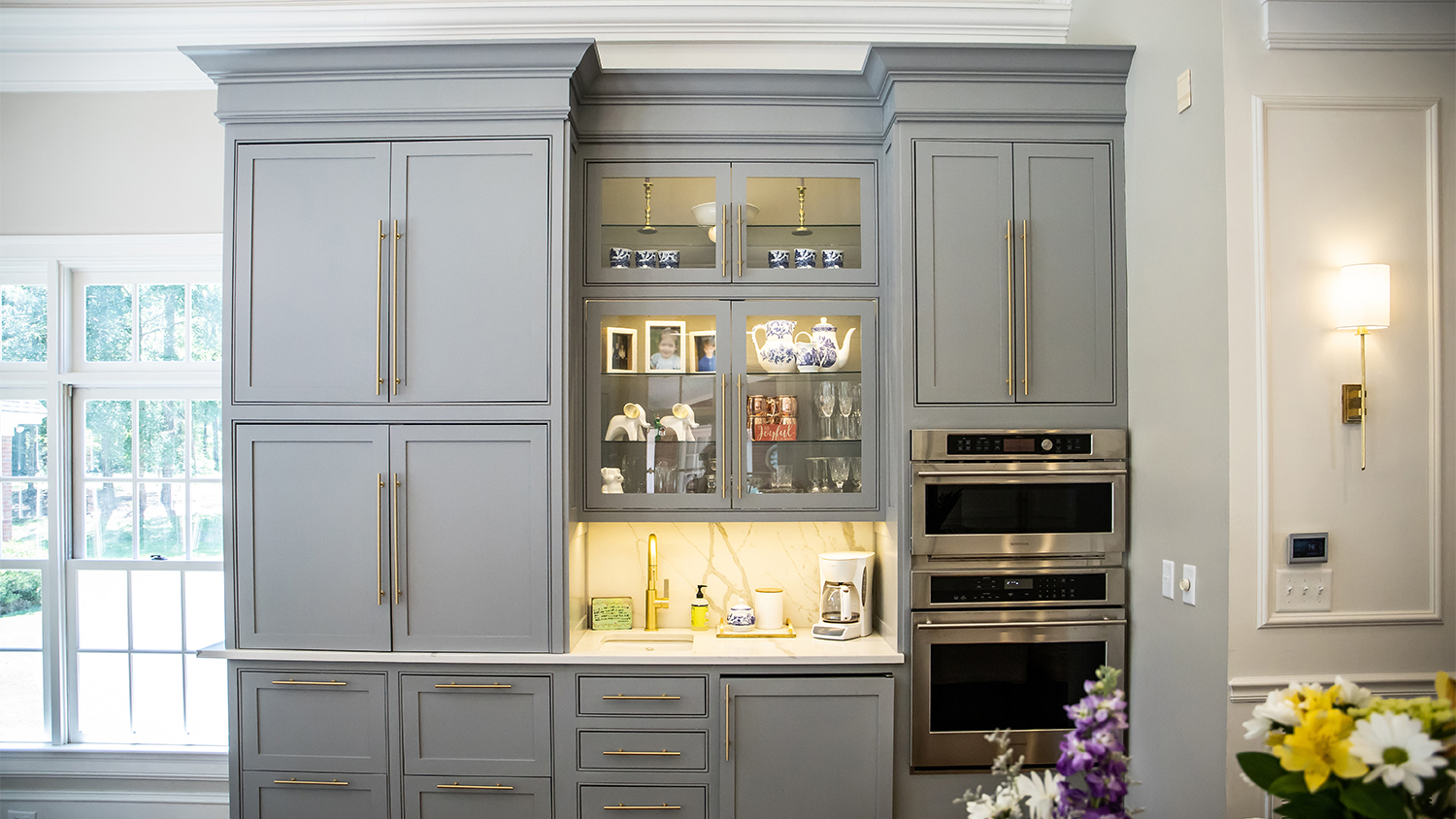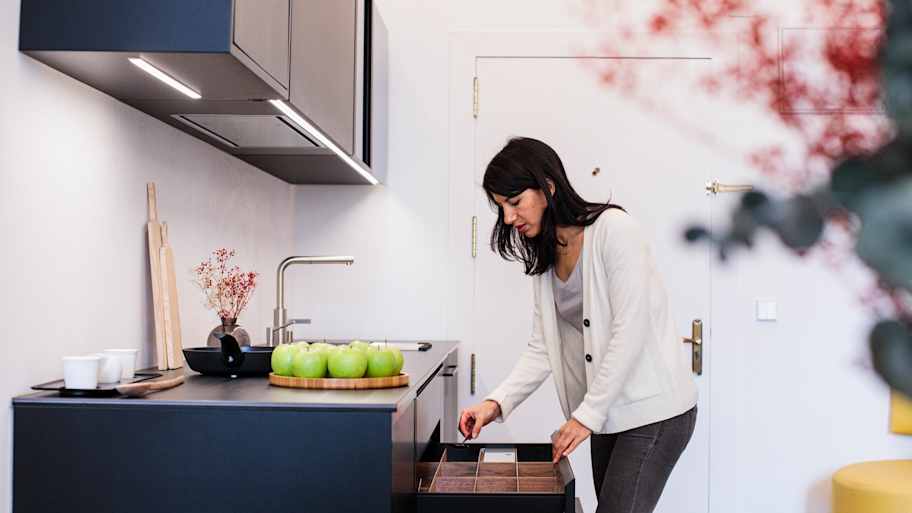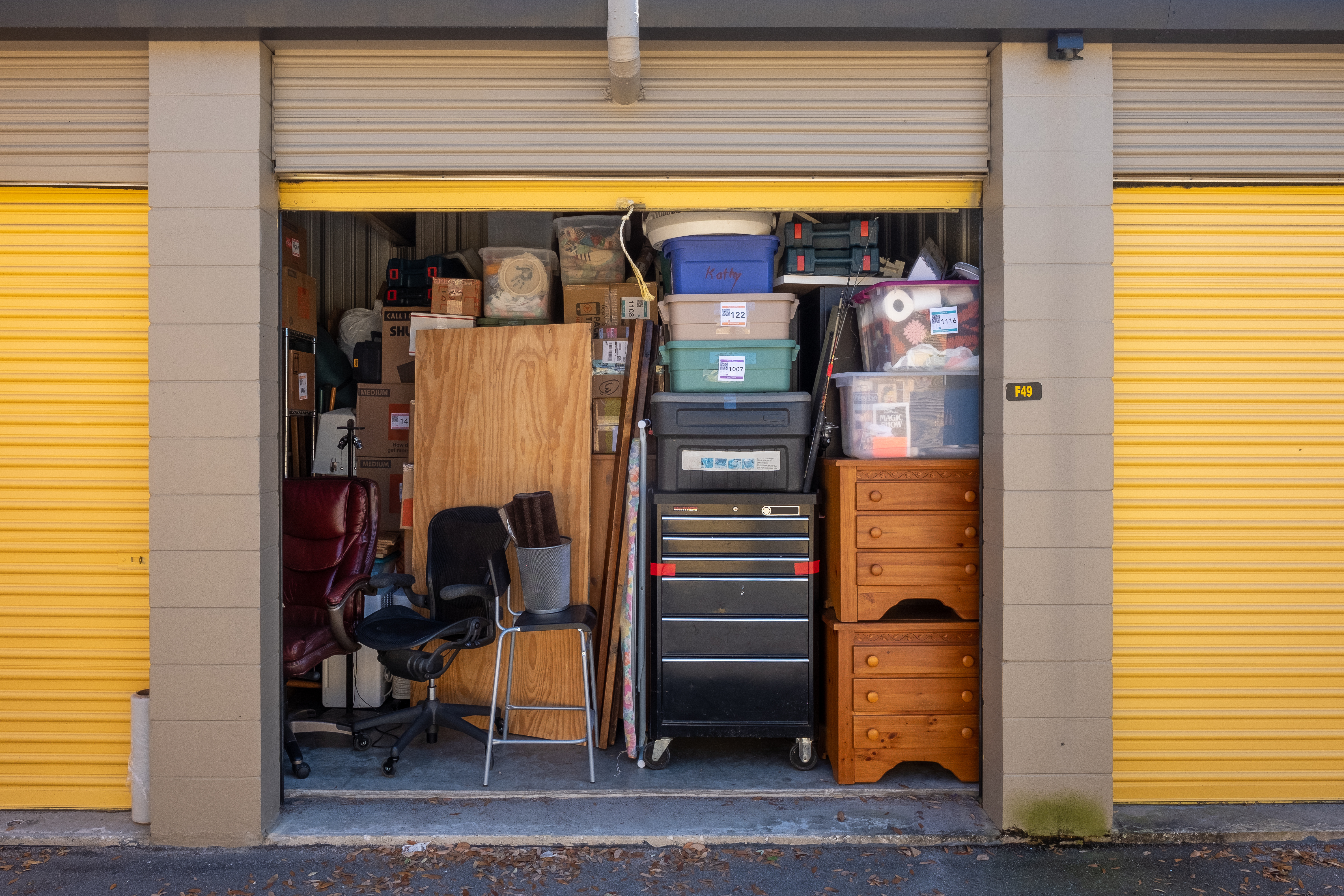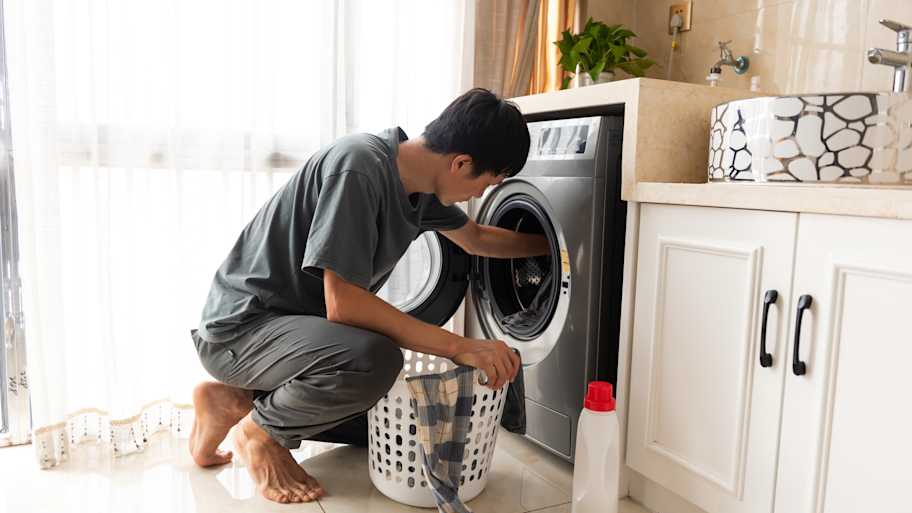
Discover the average professional organizer cost, what influences pricing, and how to budget for your next home organization project.
More countertop calm, less calamity


You splurged on gorgeous granite countertops but can’t even see them thanks to loads of clutter—keys, papers, appliances, and crocks of tools. Now your small kitchen looks even tinier, and you barely have room to prepare meals. Read on for smart strategies to regain workspace and style.
A general rule of thumb: Only keep things you use every. single. day. on your countertops. Everything else gets sold, donated, or stored. Even if you think you need it, you’ll likely discover redundancies taking up some serious space, along with appliances you only use a few times a year.
When deciding which small appliances to buy, err on the side of compactness. Instead of a toaster oven, go with a toaster. If you don’t need a large-capacity blender, purchase a smaller one.
Look up for another storage opportunity, and move items from the countertops and into this unused space. Hang a pot rack from the ceiling, and suspend baskets, which you can fill with onions and garlic or towels, potholders, and dishcloths.
Secure a wine rack and pegboard to the wall. On the board, hang pots, bakeware, mugs, and utensils, like handheld strainers and wooden spoons. If you don’t have small children, consider keeping knives on a wall-mounted magnetic knife holder.
It’s convenient to keep your toaster and coffee machine on the counter. However, they take up valuable room and make your kitchen look cluttered. Instead, store items like these in your cabinets, pull them out when using them, and immediately put them away. You may need to organize your cabinets first to free up some space.

Put in more cabinets so you can store frequent counter hogs, like food processors and rice cookers. Try adding cabinets or shelves above your fridge for cookbooks, flour, and sugar canisters. Create an appliance garage (cabinet storage hidden by a door) for a coffee station or large appliances like a standing mixer.
Call a local cabinet contractor if you need a pro to install new cabinetry. On average, wood cabinet installation costs about $130 to $200 per cabinet.
If you have the space, add a kitchen cart or kitchen island. Look for one with plenty of storage underneath in the form of drawers, cabinets, or shelves.
Keep equipment you don’t use on a regular basis, like a pasta machine or ramekins, elsewhere. Try the garage, pantry, mudroom, or basement. To avoid lugging heavy equipment, only go this route for lighter-weight tools.
The kitchen is the heart of the home, but with frequent comings and goings, phones, chargers, papers, writing tools, keys, and other miscellaneous items tend to accumulate on the kitchen counter. To prevent this from happening, designate a station in another space (like a mudroom or nearby office) for these items.

When baking, employ your kitchen table as a surface for rolling out dough. Or call on a sideboard to hold bowls of fruits and vegetables.
If you keep your countertop surfaces clean and shiny, you’ll want to display—rather than hide—them. Make a habit of cleaning your countertops daily and sealing and polishing them if necessary.
From average costs to expert advice, get all the answers you need to get your job done.

Discover the average professional organizer cost, what influences pricing, and how to budget for your next home organization project.

These kitchen drawer organization tips will reduce time spent rifling through the kitchen looking for what you need. Learn how to organize your kitchen.

If your home is a bit messy, that’s perfectly normal. Trusting a professional home organizer to revamp your space can be worth the cost. Here’s how to find and hire a professional organizer.

Discover small closet organization tips to maximize space, reduce clutter, and create a stylish, functional storage area that suits your needs.

Maximize space and save money with these expert storage unit tips. Smart packing strategies and organization hacks included.

Maximize space and reduce clutter with these smart laundry room organization tips that boost function and even your home’s resale appeal.